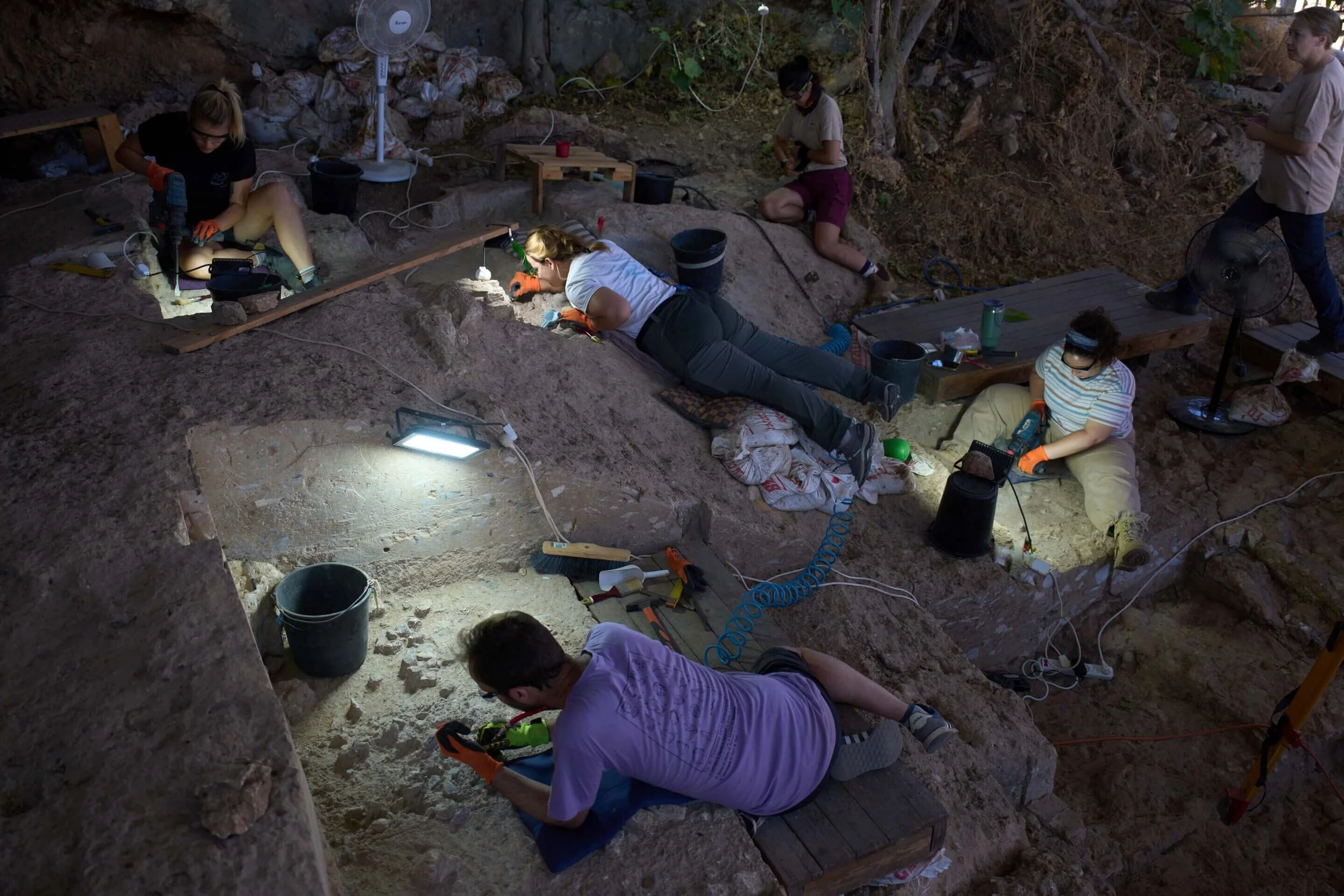Archaeologists in central Israel have uncovered one of the world’s oldest intentional burial sites, inside Tinshemet Cave, dating back roughly 100,000 years. This discovery is offering groundbreaking insights into the early development of human symbolic behavior and attitudes toward death.
Since 2016, excavations at the site have revealed the remains of five individuals, including two nearly complete skeletons and three separate skulls. These remains were found deliberately placed in shallow pits, often in a fetal position, a burial posture already known from other prehistoric contexts. What makes Tinshemet particularly striking is the presence of objects buried alongside the bodies, such as basalt stones, animal bones, and red ochre—a pigment made by heating iron-rich minerals.
Crucially, many of these items had no utilitarian function and appear to have been used ceremonially. Their inclusion with the dead suggests a ritualistic or symbolic dimension, implying early humans may have had notions of spirituality, identity, or the afterlife.
Volunteers work in Tinshemet Cave, where archaeologists are excavating one of the world's oldest known burial sites, dating back 100,000 years, near Shoam, Israel, Tuesday, July 15, 2025. Credit: AP Photo/Ariel Schalit
Yossi Zaidner, one of the lead archaeologists from the Hebrew University of Jerusalem, describes this shift in behavior as a major evolutionary step—evidence that humans were beginning to treat death not merely as a biological event, but as a socially and culturally significant moment.
The cave itself is situated in a hilly region and today houses fruit bats. Yet, beneath its modest surface, Tinshemet has emerged as one of the most crucial sites for understanding Middle Paleolithic human behavior (roughly 250,000–30,000 years ago). The site's conditions have been ideal for preserving organic material—thanks in part to frequent fires, volcanic ash, and the limestone geology—allowing archaeologists to study fragile items like bone placements, pigments, and even details like clasped hands.
The recent findings are being interpreted as part of a broader pattern of ritual burials in the Levant, reinforcing earlier, yet less rigorously documented, discoveries at Skhul and Qafzeh Caves in northern Israel. Those sites, excavated decades ago with less modern methodology, suggested similar practices but lacked firm conclusions. Tinshemet now fills that gap with stronger evidence and better preservation.
Professor of Archaeology Yossi Zaidner works in Tinshemet Cave, where archaeologists are excavating one of the world's oldest known burial sites, dating back 100,000 years, near Shoam, Israel, Tuesday, July 15, 2025. Credit: AP Photo/Ariel Schalit
Outside scholars, such as Professor Christian Tryon (University of Connecticut and Smithsonian Institution), emphasize the importance of these finds in confirming that deliberate burial was not isolated, but part of a growing behavioral pattern among early humans in the region.
Interestingly, there’s ongoing debate over the identity of the individuals buried at Tinshemet. It's unclear whether they were Neanderthals, early Homo sapiens, hybrids, or another hominin population entirely. This uncertainty reflects Israel’s prehistoric role as a crossroads between Africa and Eurasia, where different human groups met, possibly interbred, and exchanged cultural practices.
The use of ochre, early ornamentation, and potential ritual behavior point to the emergence of group identity and symbolic thinking. Burial practices may have even played a role in asserting territorial claims, much like cemeteries still symbolize land ownership or ancestral ties in many modern cultures. As Israel Hershkovitz of Tel Aviv University puts it, these burials may reflect an early form of saying: “This land belongs to my people, my ancestors.”











